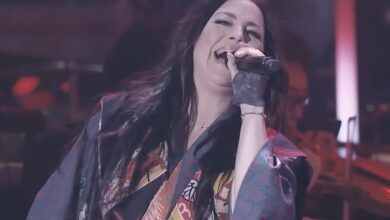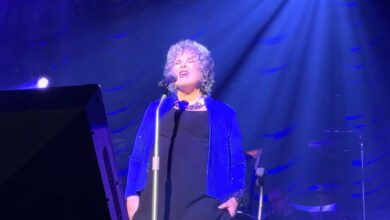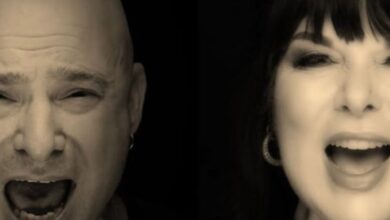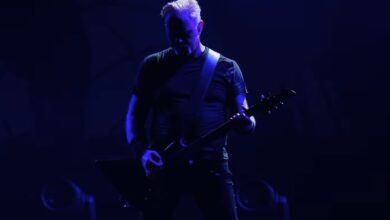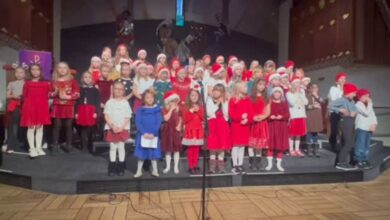Iron Maiden Summon the Gallows with a Spirit-Shaking “Hallowed Be Thy Name” at London Stadium 2025
Iron Maiden’s June 28, 2025 homecoming at London Stadium felt less like an ordinary gig and more like a metal jubilee. Seventy-five thousand devotees flooded the East End arena that doubles as West Ham United’s ground, roaring welcome to the band that once rehearsed a few Tube stops away. It became the largest non-festival headline show of Maiden’s U.K. career, underscoring how far Steve Harris’s local heroes have risen over five explosive decades.
The build-up was perfectly choreographed. Harris’s sons in The Raven Age ignited the evening at 5:45 p.m., and Halestorm’s thunderous 7 p.m. set kept the volume climbing while the midsummer sun slipped behind the Olympic Park skyline. By the time house lights dropped at 8:15, the stadium was a cauldron of anticipation and beer-fueled brotherhood, primed for the main event like a powder keg waiting for the spark.
London also witnessed the debut of new drummer Simon Dawson, recruited after Nicko McBrain’s 2024 retirement. The 50th-anniversary “Run For Your Lives” tour had already drawn raves, and Dawson’s crisp fills—equal parts reverence and youthful bite—proved why. His presence let the veterans lock in and swing without missing a beat, reaffirming Maiden’s uncanny knack for seamless reinvention even at half a century young.
Rather than easing in with radio staples, Maiden kicked open the vault: “Murders in the Rue Morgue,” “Wrathchild,” and “Killers” arrived in rapid succession, dragging the audience back to smoky pub stages of 1981. Bruce Dickinson spat Paul Di’Anno-era lyrics with relish while Eddie’s shadow stalked the LED backdrop, reminding everyone that the band’s punk-tinged origins still pulse beneath their epic grandeur.
A brand-new 8K screen proved a masterstroke. Seamless visuals shifted from Victorian alleys to interstellar nebulae, and when Eddie the Head burst across it in thirty-foot digital glory, pyro jets erupted along the catwalk, blurring virtual and real. The production dwarfed anything on past tours, signaling Maiden’s refusal to let younger acts out-spectacle them on the biggest stage in their hometown.
“Phantom of the Opera” delivered the show’s theatrical zenith. Dickinson, mock-exhausted, quipped about “fifty bloody years” before belting every operatic note with spine-tingling force. As the instrumental galloped, the backdrop peeled open like a haunted stage curtain, revealing a ghostly stairwell that matched the song’s macabre drama while seventy-five thousand voices joined his climactic wail under the London night.
Nostalgia ran deep as the setlist cherry-picked the first nine albums, revisiting eras from the raw self-titled debut to the proggy grandeur of “Seventh Son.” Fans who’d worn out their VHS copies of Live After Death found surprises mixed among staples—proof that Maiden still digs for gems rather than coasting on autopilot hits even after half a century on the road.
Playing at West Ham’s ground added emotional heft; Harris, a lifelong Hammer, beamed each time claret-and-blue banners flashed on screen. Older East Enders in the pit swapped tales of seeing Maiden at the Ruskin Arms in ’76, marveling at how a local pub band now filled an Olympic-era colossus just down the road from their early stomping grounds.
The night’s centerpiece, “Hallowed Be Thy Name,” unfolded like a metal morality play. Dickinson, shackled in a steel cage, sang the condemned man’s plea while a digital gallows loomed overhead; when the trapdoor “opened,” the real Bruce slipped offstage as a CGI double was dragged into darkness, leaving the crowd gasping before detonating into a roar that rattled the rafters.
That roar hit seismic levels—no surprise with seventy-five thousand throats in unison. Choruses rolled around the stadium like thunder, and long-time faithful swore they hadn’t heard “Killers” or “The Number of the Beast” sung so loudly since the 1988 Seventh Son tour. The communion of shared history turned concrete and steel into a cathedral of iron.
Dawson’s punchy double-kick jolted “The Clairvoyant” and “2 Minutes to Midnight” into overdrive, earning grins from Steve Harris and approving nods from Adrian Smith. For die-hards worried a lineup change might dull the edge, the drummer’s ferocity erased doubts and injected fresh adrenaline into songs older than many attendees pogoing on the pitch.
The main set’s finale, “Iron Maiden,” saw a towering mech-Eddie stride across the screens, ripping virtual power cables and sending showers of sparks onto the ramp. Flames chased the stage perimeter while Dickinson brandished a ragged Union Jack, capping a ninety-minute barrage in spectacular, quintessentially Maiden fashion amid fireworks and crowd-wide devil-horn salutes.
After a brief blackout—and Churchill’s famous “we shall fight” speech rumbling through the P.A.—the encore exploded into “Aces High,” “Fear of the Dark,” and a cathartic “Wasted Years.” Thousands of smartphone flashlights swayed like fireflies under the summer sky, framing Iron Maiden’s own longevity as a luminous lesson in living loudly in the present.
Veterans compared the spectacle to Long Beach ’85: same fire, bigger stage, vastly smarter production. Where inflatable backdrops once sufficed, today’s Maiden wield stadium-wide LED walls and drone-mounted spotlights, yet the beating heart remains Harris’s galloping bass, twin-harmony guitars, and Dickinson’s operatic roar—technology enhancing, never replacing, the human spark that powers their mythology.
When the final chords faded and Dickinson declared the audience his “best friends,” the sentiment felt earned. Fans spilled into Stratford draped in sweat and fresh merch, buzzing about Dawson’s debut and the return of deep cuts. For a band marking fifty years, Iron Maiden somehow sounded as if they were just getting started—and London roared its unanimous assent into the warm summer night.
